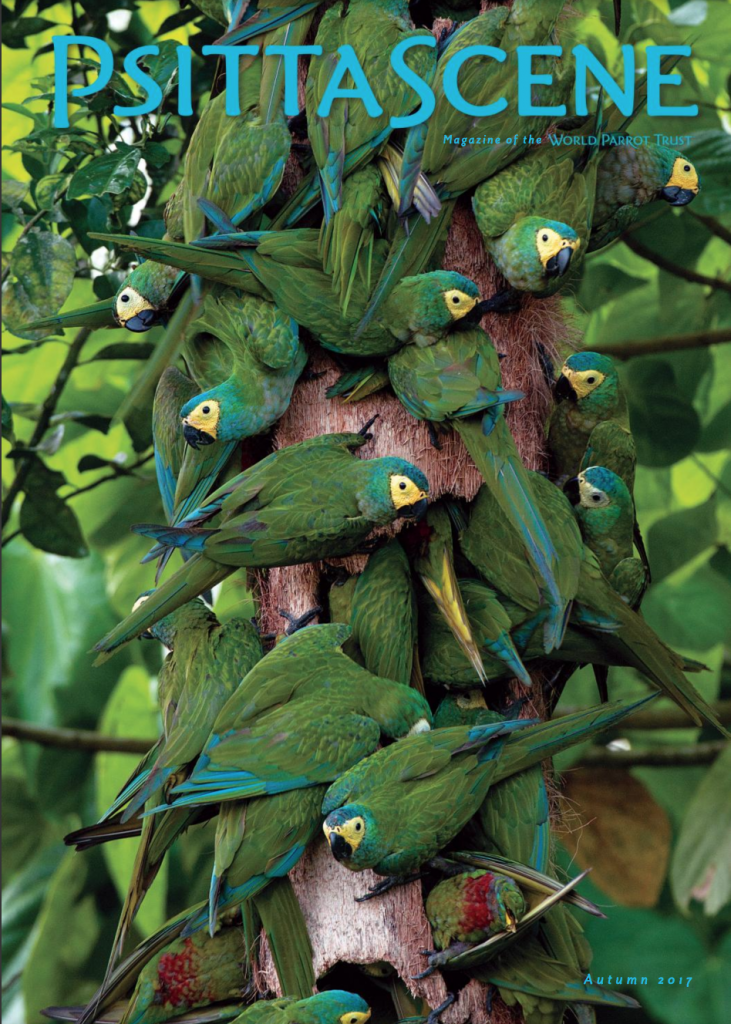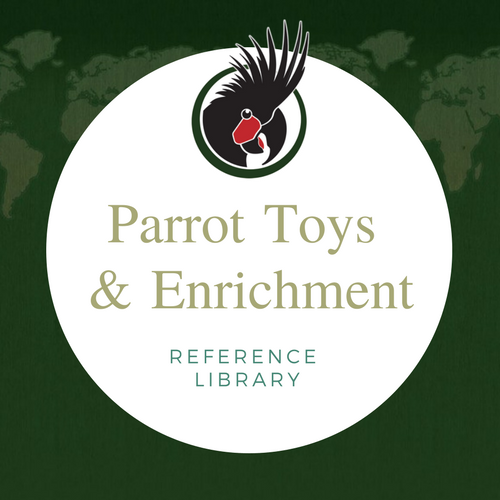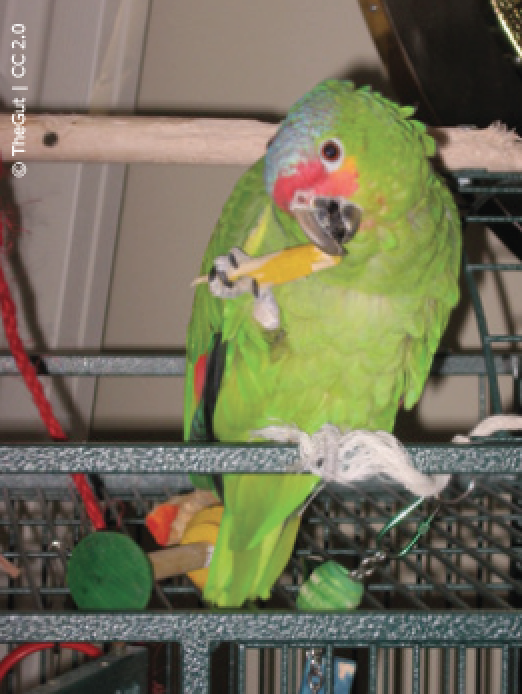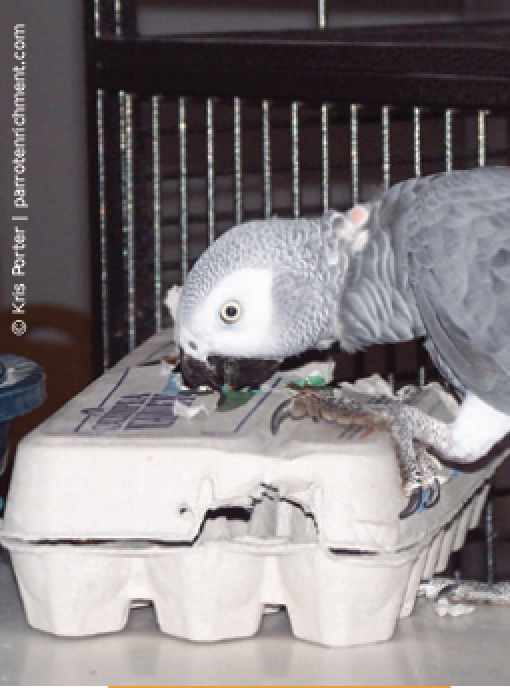
The Parrot that Chews
A chewing, climbing, foraging parrot is a happy one, and that’s half of the battle of keeping birds healthy.
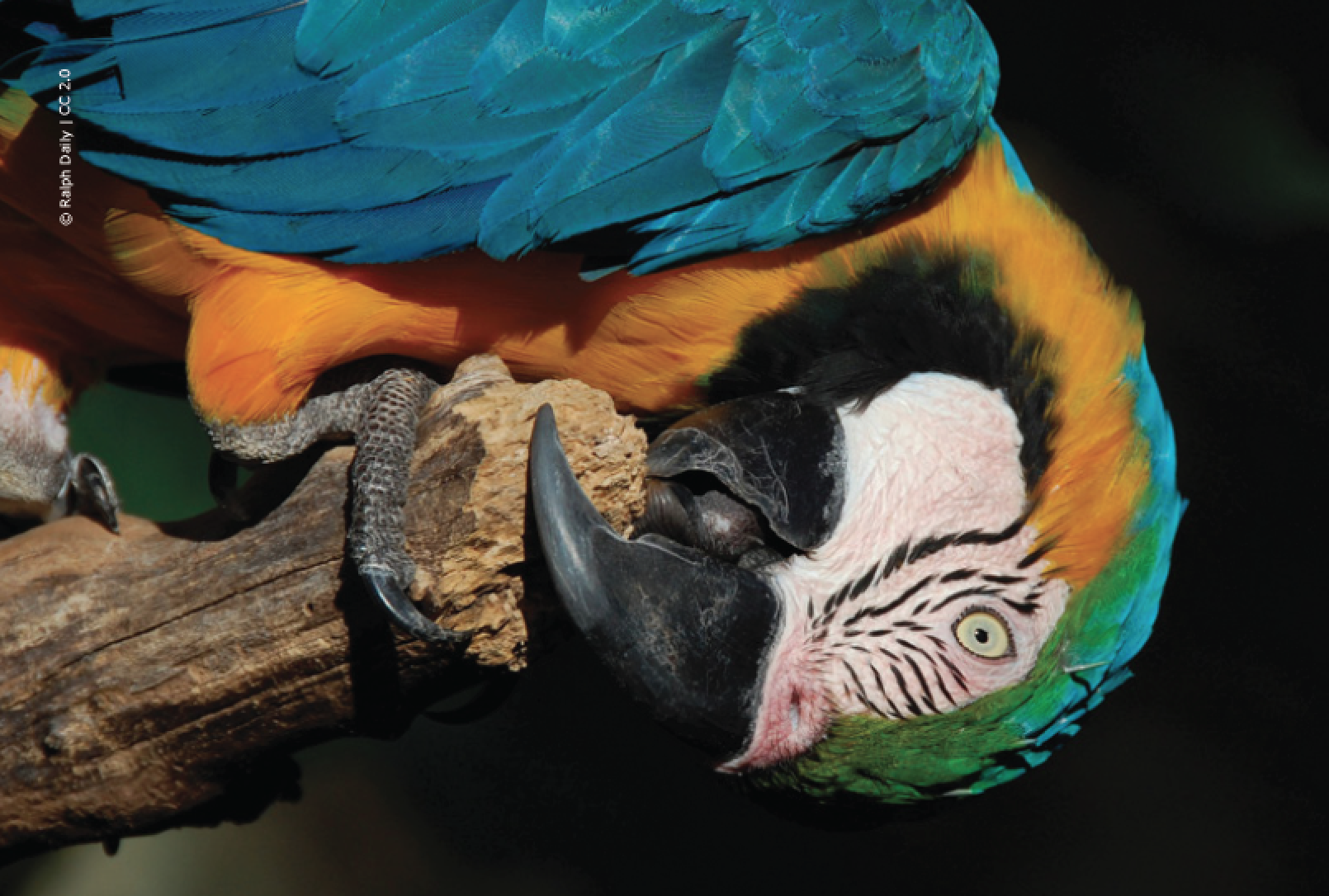
From the Summer 2017 Edition of PsittaScene Magazine. Get a free subscription with your WPT membership.
As we know, wild parrots are very busy creatures, searching for and then dismantling foodstuffs in order to get at the choicest and healthiest morsels they need for survival.
In their natural ranges parrots ingest bark, leaves, and other debris; they also strip vegetation and chew wood to build nests. In certain parts of the world, parrots take clay soils to get minerals and to neutralise toxins from seeds they eat. So, instinctively parrots want to work for their living; they expect to.
Companion parrots have no such outlet for these wild tendencies, so boredom (and its attendant problems) can result. They often find themselves at the mercy of their human’s schedules: a certain time to eat, a specific time for a bath, and playtime. If we, as their keepers, can replicate items found in the wild with puzzles, toys, preening items, and browse for them to keep busy with during our absence, then to some degree these intelligent animals can be kept mentally and physically occupied.
Keeping parrots busy with toys and browse and closely supervising any out-of-cage excursions will also distract them from chewing on household items that aren’t safe, like electrical cords and window blinds. Plus, a healthy parrot (with no underlying issues) provided with safe chewing opportunities should never need to have its beak trimmed.
A Chewing Parrot is a Happy Parrot
Above all, most parrots love to chew. Their beaks and tongues are built for plucking and manipulating, and their brains are curious. Other than plowing through their breakfast and dinner there isn’t much else for a companion parrot to do, so, the daylight hours should be otherwise filled with exercise and toys to stimulate natural behaviours.
Here are some safe and easy ideas for keeping beaks busy:
• Natural branches – grapevine, fir, dogwood, birch, pine, poplar, and willow provide good browse and perches. Remove any sticky sap or wild animal contaminated parts, and make sure the branches are not sprayed with pesticides or have fungus or mould. Avoid branches near busy roads, as they will have been exposed to salt, grease, oil and other pollutants.
• Natural pine cones – pick clean, new and debris free. Bake at 200 degrees Fahrenheit for 20 minutes to heat-sterilize. Shut off oven and let sit with door closed for 2 hours to cool off and dry further. Stuff with food items or other chewables.
• Paper towel rolls – cut off any signs of glue and stuff with food items or paper.
• Dried corncobs – make sure they are free of pests and mould.
• Paper cups – unwaxed and plain for stringing on existing toys.
• Small brown paper sacks – fill with other toys or food items and fold shut.
• Wood scraps – make sure they are untreated and have no nails, screws or staples. Bird safe wood options include balsa, pine, and fir.
• Dried woven palm leaves, sea grass, corn husks – weave them in and out of cage wire, tie onto perches, or stuff into other chewables.
• Woven baskets and shapes – make sure they’re natural and untreated and contain safe material, such as willow or grapevine.
• Basket-style coffee filters (unbleached paper) – string into existing or new toys, or fill several layers with nuts and seeds, tie closed and suspend from cage wire or favourite perch.
• Wire-free wooden clothes pins – unstained and unpainted.
• Wooden spoons – drill a hole and attach to toys.
• Food items – kale, chard and other greens, apples, carrots and tops, patty pans (small squash-like vegetables), pomegranate pieces, zucchini chunks, sweet or hot peppers (with seeds).
• Ink-free boxes or cardboard (clean) – hide other toys or food items in these.
• Egg cartons (cardboard, that contained intact eggs, with none broken) – cut up into smaller pieces for foot toys or fill cups up with other items.
• Dried coconut shell – hollowed out for playing with the fibres, or including chewables on the inside.
The items mentioned above are just a start. Remember, safety first – when introducing a new toy always supervise the activity at first to make sure nothing goes awry. Then sit back and watch them enjoy.
(And hopefully leave your window and floor trim alone!)
This article was originally published Summer 2017 in PsittaScene magazine.
© Copyright 2018 World Parrot Trust. All Rights Reserved.
